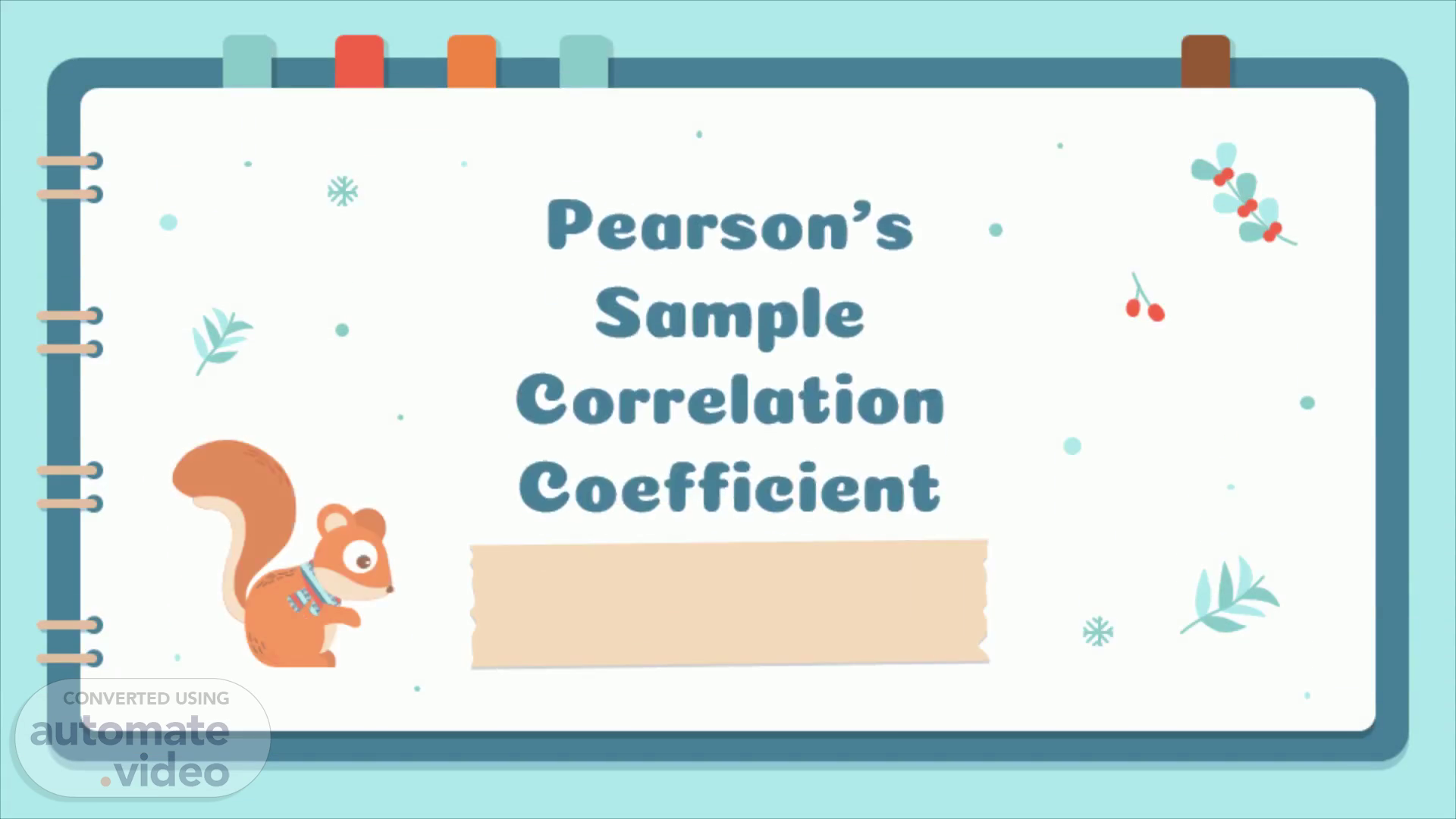
Pearson's Sample Correlation Coefficient
Scene 1 (0s)
Pearson’s Sample Correlation Coefficient. Kyzel Anne Balisacan Rochelle Aquino Venus Garol.
Scene 2 (8s)
Today, we'll look at Pearson's Sample Correlation Coefficient. The next slide will show our report, which was created by Rochelle, Kyzel , and Venus..
Scene 3 (16s)
01. Let us first pray before we begin our discussion..
Scene 4 (24s)
Energizer. 04. 03. 02. 01. 04. 03. 02. 01.
Scene 5 (35s)
Energizer. 04. 03. 02. 01. 04. 03. 02. 01.
Scene 6 (43s)
Energizer. 04. 03. 02. 01. 04. 03. 02. 01.
Scene 7 (52s)
Energizer. 04. 03. 02. 01. 04. 03. 02. 01.
Scene 8 (1m 0s)
Answer:. 04. 03. 02. 01. 04. 03. 02. 01.
Scene 9 (1m 4s)
Module 12 Recap. Bivariate data deals with two variables that are compared in order to find or establish their relationship. A scotter plot is the most common display of qualitative data. It shows pattern, trends, relationship and possible extraordinary values between the variable..
Scene 10 (1m 22s)
Introduction of our lesson. This lesson introduces the concept of correlation analysis, direction and strength of correlation, and pearson r..
Scene 11 (1m 34s)
Direction of Correlation. 04. 03. 02. 01. 04. 03.
Scene 12 (1m 40s)
Direction of Correlation. Positive correlation - Exists when high values of one variable correspond to high values in other variable or low values in one variable corresponds to low values in the other variable..
Scene 13 (1m 50s)
Direction of Correlation. Negative Correlation - E xists when high values of one variable corresponds to low values in the other variable or low variables correspond to high values in the other variable..
Scene 14 (2m 1s)
How can we determine the strength of association based on the Pearson correlation coefficient.
Scene 15 (2m 39s)
Pearson’s Product-moment Correlation Coefficient.
Scene 16 (2m 47s)
Perfect Very high Moderately high Moderately low Very low Zero.
Scene 17 (2m 58s)
The Trend line. 02. It is the line closest to the point. The direction of the lines tells the direction of correlation that exist between the variables. If the trend line points to the right, its shape is positive, thus there is a positive correlation between two variables. If it points to the left, there is a negative correlation between two variables..
Scene 18 (3m 8s)
Example 1. 04. 03. 02. 01. Example I: Determine the value of Pearson r for the following data and interpret the results. 16 14 10 12 10 20 a) Construct the table shown below 10 16 14 10 12 20 b) Complete the table above by: • Square all entries in the X column and put them under X2 column. Square all entries in the Y column and put them under Y2 column. Multiply entries in X and Y columns and put them in XY column. Get the summation of all entries in X, Y, X2, Y2 and XY column..
Scene 19 (3m 25s)
04. 03. 02. 01. c) Use the Pearson Product Moment Correlation Formula to solve for r and interpret. Solving for r EX -32 EX2-234 E Y2=1096 E XY = 474 nyxy-EX•EY -(EY)21 5(474) - [5(234) - - (72)21 2370 - 2304 [1170 - 1024115480 — 5184] 66 66 43216 r = 0.32; moderately low but positive.
Scene 20 (3m 38s)
Example 2. 04. 03. 02. 01. Example 2: Determine the value of Pearson r for the following data and interpret the results. 10 20 30 40 70.
Scene 21 (3m 52s)
Solving for r. 04. 03. 02. 01. Ex E Y =280 EX2=140 E 14000 EXY = 1400 nEXY-EX•EY 7(1400) - [7(140) - - (280)2] 9800 — 7840 [980 — — 784001 1960 r = 1; Perfect correlation but positive.
Scene 22 (4m 2s)
ACTIVITIES. 04. 03. 02. 01. 04. 03. 02. 01.
Scene 23 (4m 8s)
ACTIVITY 1: PRACTICE. 04. 03. 02. 01. Solve for r and interpret the result ..
Scene 24 (4m 15s)
ACTIVITY 2: : KEEP PRACTICING. 04. 03. 02. 01. In the given table on the below, solve for Pearson r and interpret the result..
Scene 25 (4m 24s)
ACTIVITY 1: ANSWER. 04. 03. 02. 01. 04. 03. 02. 01.
Scene 26 (4m 30s)
ACTIVITY 2: ANSWER. 04. 03. 02. 01. 04. 03. 02. 01.
Scene 27 (4m 33s)
WRAP-UP. 04. 03. 02. 01. 04. 03. 02. 01.
Scene 28 (4m 36s)
How do you calculate and interpret the Pearson’s Sample Correlation Coefficient?.
Scene 29 (4m 41s)
04. 03. 02. 01. We will use the measuring devise to determine the strength of the computed r. Pearson r ±0.75 to < ±0.50 to < ±0.75 ±0.25 to < ±0.50 > O to < ±0.25 ualitative Descri tion Perfect Moderatel hi Moderatel low Ve low No correlation.
Scene 30 (4m 49s)
VALUING. 04. 03. 02. 01. 04. 03. 02. 01.
Scene 31 (4m 55s)
The correlation coefficient quantifies the relationship between two variables. How about you as a student, are you in favor of quantifying your relationship with your family, friends and community? Is there such thing as quantifying human relationships?.
Scene 32 (5m 1s)
Thank you for taking the time to watch and listen!.